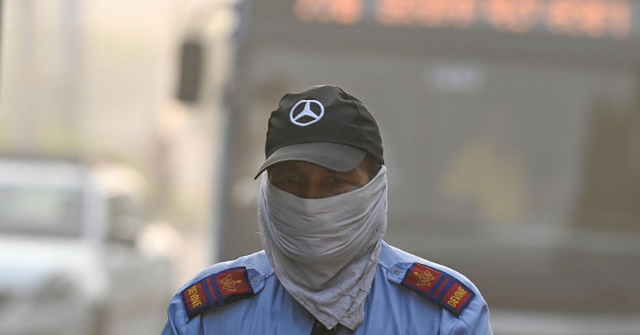According to a Swiss manufacturer of air quality equipment called IQAir, the air quality in India’s capital of New Delhi degraded to “hazardous” levels on Tuesday, due in part to the large quantity of fireworks detonated during the holiday festival of Diwali.
IQAir said New Delhi had the most polluted air of any major city in the world on Tuesday, with concentrations of particulate matter over 59 times higher than the limit for healthy air specified by the World Health Organization (WHO).
“During Diwali which officially begins October 20, air quality typically worsens due to the use of firecrackers, agricultural stubble burning, and regular urban emissions from vehicles and industry,” the company noted.
The Indian government’s Central Pollution Control Board (CPCB) disagreed with the severity of IQAir’s alert, but still rated New Delhi’s air quality “very poor” on Tuesday, a level the city will probably maintain for the rest of the week.
India is well aware of the air quality threat posed by Diwali fireworks. The “Festival of Lights” is the biggest public holiday on the Indian calendar. Diwali celebrates the victory of light over darkness, so celebrants are encouraged to bring light into the world — everything from lamps and candles to fireworks.
Diwali happens to coincide with the fall smog season in New Delhi and the surrounding area, including smoke from fires that were set to clear farmland. Mindful of declining air quality, city officials imposed a blanket ban on fireworks years ago, but enforcement has been difficult due to the popularity of holiday fireworks and the immense population of New Delhi, which has over 20 million residents.
The Indian Supreme Court modified the fireworks ban this month to allow “green firecrackers” during Diwali celebrations. “Green” fireworks are only about 30-percent less polluting than the normal variety and the same logistical challenges that made enforcement of the fireworks ban so challenging have made it all but impossible for city officials to ensure every Diwali detonation is a “green” firecracker.
The BBC reported on Tuesday that traditional fireworks were still readily available in shops and stalls across New Delhi. Also, the Supreme Court’s requirement that fireworks be limited to one hour in the morning and two hours in the evening during Diwali has been widely ignored.
“The air was filled with smoke and visibility was poor. I could taste ash in my mouth. As the taxi entered Delhi, visibility became even poorer. The tall buildings which are usually visible at this hour had disappeared behind a thick veil of smog,” BBC reporter Vikas Pandey said of his visit to the Indian capital.
The government of Pakistan complained that air quality in the Punjab region declined to dangerous levels as low-speed winds carried toxic fumes from India’s Diwali fireworks across the border, adding more toxins to Punjab’s already-polluted skies.
Punjab’s capital city of Lahore had the second-worst air quality in the world after New Delhi on Tuesday, according to IQAir. Pakistani officials ordered emergency measures to deal with the hazardous air, including water sprinklers, anti-smog guns, and “smog response squads” tasked with raiding local establishments that are contributing to air pollution.
Read the full article here
